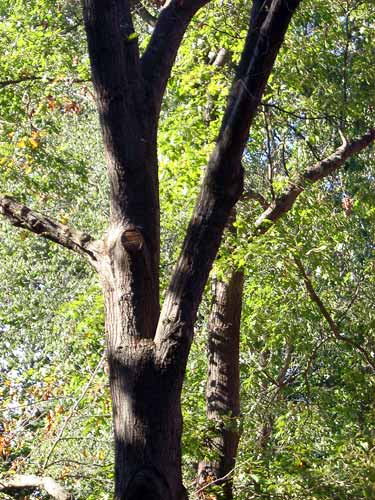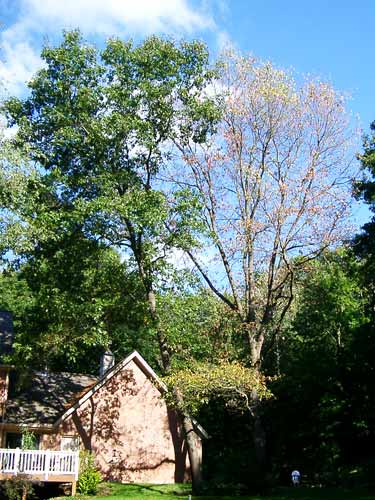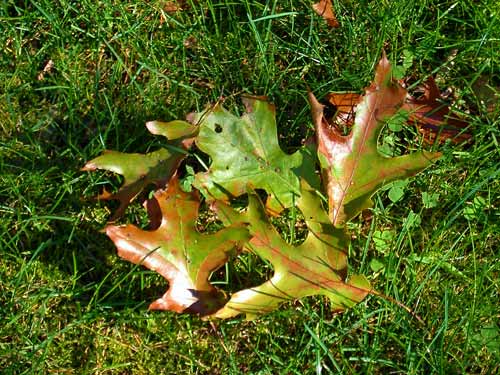Stop pruning oak trees now to avoid oak wilt
Stop the saws! Smart gardeners should not prune oak trees past April 1 to ensure their trees don’t succumb to oak wilt disease. Avoid pruning until November.
Oak trees comprise a significant portion of Michigan forests and are grand, valuable members of our urban landscapes, providing shade and wildlife habitat and food. Sadly, oak wilt (Ceratocystis fagacearum) is a serious disease that can quickly kill oak trees. Oak trees pruned during the growing season are at greater risk of infection.
According to experts at Michigan State University Extension, the normal time-tested advice to prevent oak wilt is to not prune oaks after April 1, otherwise you risk injuring oaks. While risk of infection decreases after mid-July, it’s prudent to avoid pruning any type of injury of these majestic trees until November.


Left, Red oak tree pruned in April. Right, Same red oak tree in June. Photo credits: Rebecca Finneran, MSU Extension

Heavy leaf drop from tree in June. Photo credit: Rebecca Finneran, MSU Extension
Oak wilt is a systemic fungal disease transmitted by sap beetles that are attracted to fresh wounds created during the growing season. (You may remember its cousin, the dreaded Dutch elm disease.) Beetles feed from tree-to-tree and if one of the host trees is infected with oak wilt, the pathogen can be carried from tree-to-tree as the sap beetle feeds. The disease can also spread from tree-to-tree through root grafts. Oak wilt can kill trees in the red oak group within a few month; members of the white oak group are not impacted as quickly.
Prevention
Due to the systemic nature of the disease, oak wilt is difficult to control; prevention is the best management tool. Not pruning or damaging oak trees during the warm season is probably the most effective tool for avoiding oak wilt. If storm damage or other emergencies necessitate that an oak tree be pruned during the growing season, promptly repair the damage and immediately seal the wound with latex paint or wound dressing. (One insect species that transmits the disease is known to arrive on wound surfaces within 10 minutes of their creation!) This rule also applies to damage caused by tree-climbing spikes, nailing signs on trees and accidental bark removal.
Spring is a popular time for people to transport firewood to vacation properties and other locations. To prevent spreading oak wilt, it’s also important to not move oak firewood from trees killed by oak wilt. If infected wood is moved to a different site and new wounding of oaks occurs in this area, sap beetles could transport the disease from the infected firewood and create a new pocket of this lethal disease.
If you suspect your firewood is tainted with oak wilt, cover it with a plastic tarp all the way to the ground, being sure to not leave any openings. This creates a barrier to keep beetles away and generates heat inside the tarp, which helps to kill the fungus.
To get more information on the background, symptoms, life cycle, management and prevention of oak wilt disease, read the MSU Extension article “Prune oaks in winter to avoid oak wilt.”
For more information on a wide variety of smart gardening articles, or to find out about smart gardening classes and events, visit www.migarden.msu.edu.



 Print
Print Email
Email